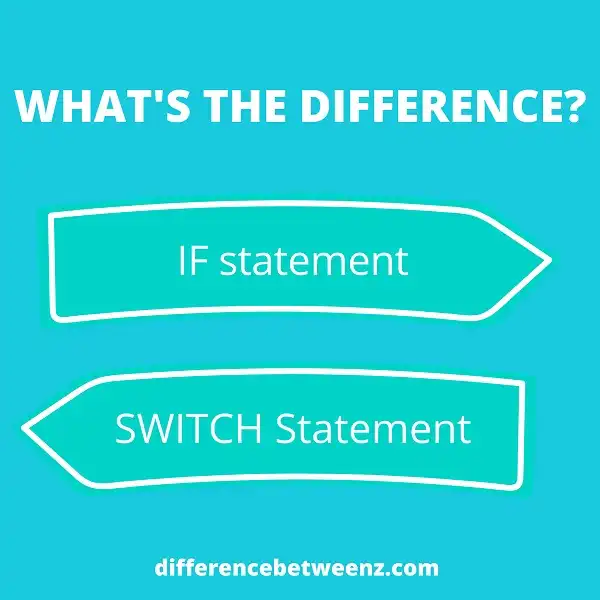There are two primary ways you can control the flow of your code: conditional statements and loops. In this post, we’ll take a look at the difference between if statements and switch statements. Let’s get started!
What is the IF statement?
An ‘if statement’ is a programming construct that allows you to specify a course of action to be taken if a particular condition is met. For example, you could use an ‘if statement’ to check whether a user has entered a valid password before granting them access to a secure area of your website. The ‘if statement’ consists of a keyword (‘if’), followed by a condition (in the above example, ‘ password == “secret” ‘), and finally a block of code to be executed if the condition is true ( ‘ printf(“Welcome!”); ‘). If the condition is false, the ‘if statement’ will be skipped and the program will continue executing from the next line of code. ‘If statements’ can be nested inside each other, allowing you to create more complex conditions.
What is the SWITCH Statement?
In programming, the switch statement is a type of control that allows for the efficient execution of different code blocks depending on the value of a particular expression. The switch statement works by evaluating the expression and then executing the associated code block. In many cases, the switch statement can provide a more efficient way to execute code than using if-else statements. For example, consider the following code:
if (x == 1) {
print(“One”);
} else if (x == 2) {
print(“Two”);
} else if (x == 3) {
print(“Three”);
} else {
print(“Invalid input”);
}
This code can be rewritten using a switch statement as follows:
switch (x) {case 1: print(“One”); break; case 2: print(“Two”); break; case 3: print(“Three”); break; default: print(“Invalid input”);} As you can see, the switch statement can be much more concise and easier to read. In addition, the switch statement can often execute faster than an equivalent if-else statement.
Difference Between IF Statement and SWITCH Statement
‘If statement’ and ‘Switch statement’ are two conditional statements used in programming. ‘If statement’ is used to execute a certain set of code if a particular condition is true. ‘Switch statement’, on the other hand, is used to execute a different set of code based on the value of a variable. ‘If statement’ can be used to check for multiple conditions, whereas ‘Switch statement’ can only check for one value. ‘If statement’ is typically used when there are few conditions to check, whereas ‘Switch statement’ is used when there are many possible values. ‘If statement’ is more flexible than ‘Switch statement’, but ‘Switch statement’ can be easier to read and understand. When choosing between ‘If statement’ and ‘Switch statement’, it is important to consider the number of conditions to check and the readability of the code.
Conclusion
So, what is the difference between an if statement and a switch statement? The main difference is that an if statement checks to see if a condition is true and then runs a certain set of commands, while a switch statement checks to see which command should be run based on the value of a variable.
In most cases, the if statement will be more efficient because it doesn’t have to compare every possible value against the condition as the switch statement does. However, there are some instances where using a switch statement can be more efficient. As with all things programming-related, it’s important to know when each option makes sense so you can make the best decision for your code.


